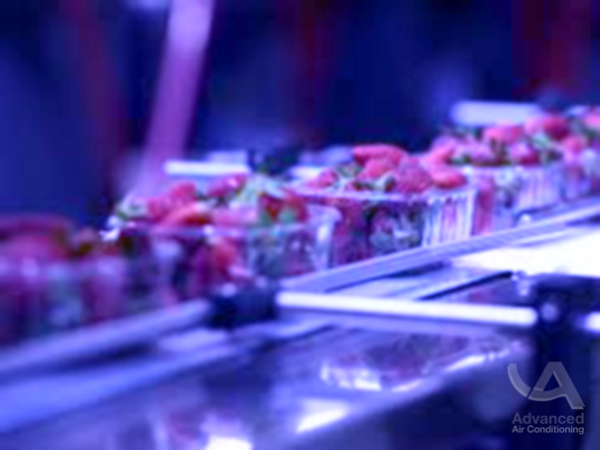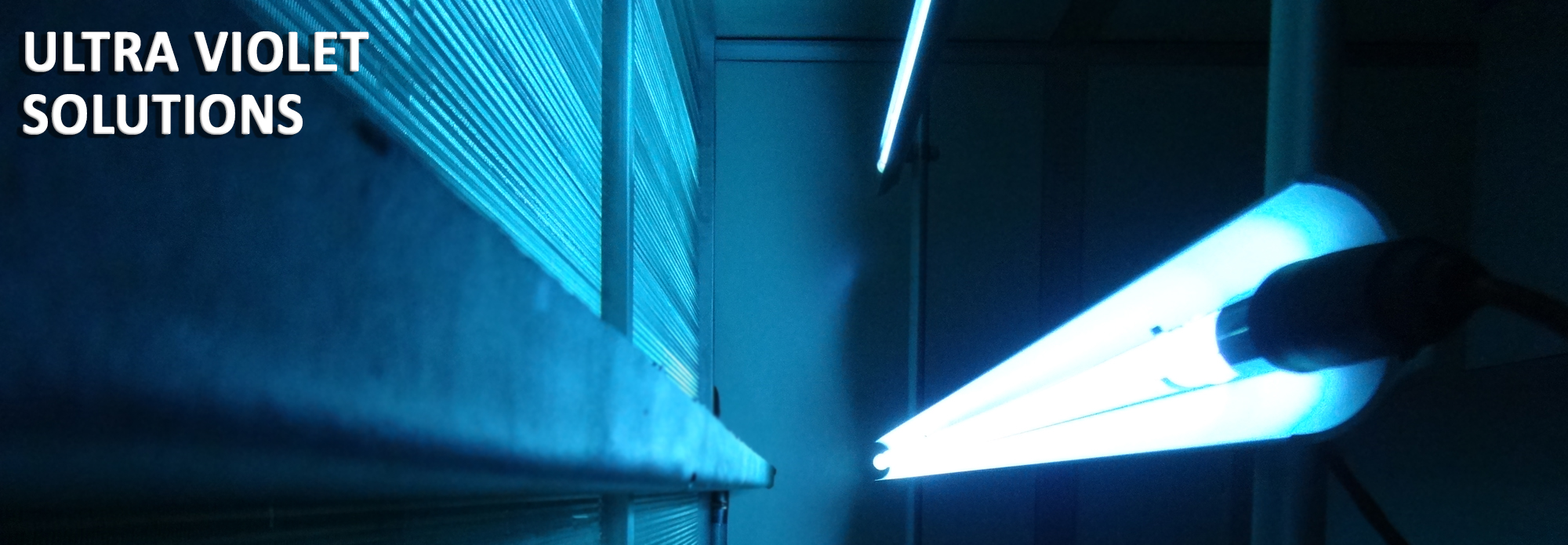Benefits of Ultraviolet light in HVAC
Advanced Air Conditioning provide leading-edge ultra violet (UV) solutions in the commercial and industrial environments where indoor air quality (IAQ) and surface disinfection are required. The use of UV Lighting in your HVAC system prevents and eliminates the buildup of any type of organic material on the system’s drain pipes, cooling coils, and interior ductwork. The majority of our customers are in the food production, education, healthcare and medical industries. In the current climate, there is also a growing demand for UV solutions in residential homes and apartment buildings.
In our modern times, a substantial percentage of the population in urban and suburban areas spends most of their days in enclosed spaces. Hence the increasing importance of indoor air quality. 40 years ago data began to be published that reported people who worked in office buildings had been developing headaches, sore throats, and chronic fatigue, among others. In the coming decade, we found these symptoms developing more frequently in hermetic buildings. We came to label these as cases of Sick Building Syndrome (SBS). When you are feeling poorly we usually attribute it to the flu or an infection. However, the culprit behind it could be something as innocuous as your building’s heating, ventilation and air conditioning (HVAC) systems.
The International Center for Indoor Environment and Energy estimates that poor air quality from sick buildings increases job losses by 5%. Sick buildings can lead to work absenteeism, but it also decreases productivity, since employees usually find themselves ill or unmotivated in the workplace, usually due to respiratory ailments. Low-quality HVAC systems can be a risk factor due to cross-contamination between the air supply and the air extraction. Lack of maintenance or inadequate design can be a leading contributor towards SBS, especially when the outdoor air quality is low or there is too much air re circulation. Here at Advanced Air Conditioning, our highly qualified design team can offer tailored design and installation of UV lighting options that can be greatly beneficial when designing new commercial systems and replacing existing systems, and will recommend the best outcome.
Simply, it’s a smart, healthy, cost effective option that makes sense no matter how you look at it.
Reduce Energy Consumption
By adding UV lighting to your HVAC system, you can reduce energy consumption. UV lighting itself doesn’t conserve any energy. However, it restores the system’s performance to optimal levels which helps to save you money.
Improved Airflow
Adding UV lighting to your HVAC system helps to reduce microbial buildup and other organic materials on air filters, cooling coils, drain pans, and duct surfaces, improving your airflow and keeping your entire HVAC system working like new.
Reduce Disease Transmission
Reducing disease transmission is the primary benefit of UV lighting in your heating and cooling unit. UV lighting kills pathogens and other microorganisms that would normally thrive in the system.
How Ultraviolet works with HVAC
UV-C (also referred to as germicidal UV) operates in the germicidal wavelength 254 nanometers, and is used for air, surface, and water disinfection. UV-C attacks the DNA of a living cell, penetrating the cell membrane, breaking the DNA structure of the microorganism and renders organisms sterile. When organisms can no longer reproduce, they die. UV-C is a simple yet incredibly effective solution for surface and air sterilisation. Due to the effectiveness of UV-C, it’s incredibly useful for hospitals, medical labs, senior care and childcare facilities, fire and police stations, airports, schools, government buildings, office buildings, hotels and more. Other benefits of UV include keeping your systems clean and therefore reducing operational and running costs.
UV rays are made artificially in UV lights by essentially passing an electric current through a gas or vapour. These type of lamps resemble fluorescent tubes. Occasionally these type of lamps use a reflector for the UV rays whilst other models provide direct air and surface sterilisation by irradiating the air and surfaces in direct view of the lamp. Some models will provide indirect air irradiation by enclosed UV lamps; these type of lamps irradiate air as it passes through the UV unit. These units are not used for surface irradiation. HVAC airstream irradiation uses effective, high-output UV lamps designed specifically for cold moving air in ductwork.
UV-V (also referred to as vacuum UV) operates in the wavelength 187 nanometers, and is the portion of the lamp that is used for neutralising unpleasant odours in the air. UV-V infiltrates the cell’s membrane, obliterating the cell’s DNA and destroying the chemicals of the dead cell. Some potentially odourous locations where UV-V would be useful are: industrial/commercial manufacturing, athletic facilities including gymnasiums and locker rooms, cooking areas in restaurants and food processing facilities, crawl spaces, animal containment or treatment areas; kennels and high smoke and fume concentration areas.
Both UV wavelengths work together to eliminate biological and chemical contaminants.

Hospital and Medical Facilities
Assisting hospital and medical facilities in the ongoing battle to keep drug-resistant bacteria from lingering in patient waiting rooms and causing new infections.

School and Education Facilities
Assisting hospital and medical facilities in the ongoing battle to keep drug-resistant bacteria from lingering in patient waiting rooms and causing new infections.

Food Production Facilities
UV light is used for a large variety of applications in the food industry. With high-performance UV light sources, water, air & surfaces can be reliably disinfected and treated.

